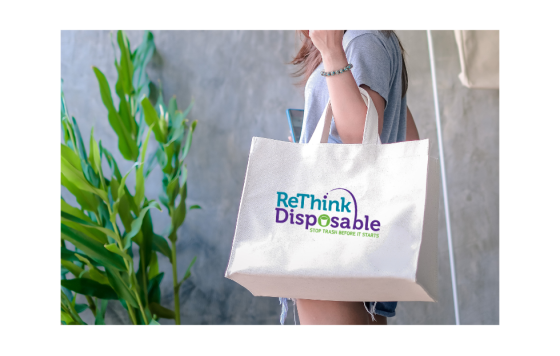Organic recycling is simply another type of recycling - transforming the waste so it can be reused as a soil amendment and does not clutter our landfills.
How does waste management at a business work?
Most businesses contract with a waste management company to deal with their waste, unlike homeowners who have municipal pickup of their waste. Companies pay based on the volume and frequency of pickup.
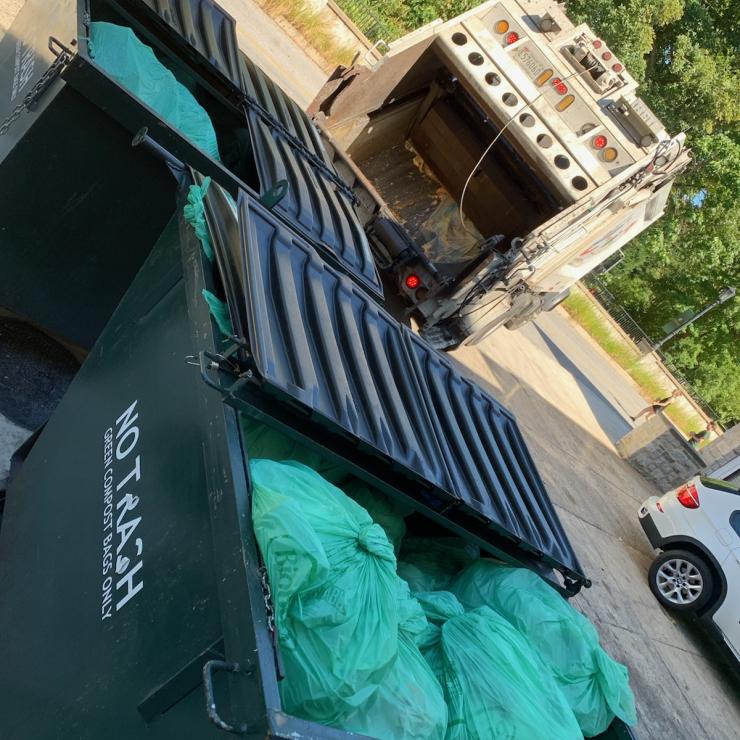
In this picture: This business has two dumpsters of compost that are picked up by Waste Neutral. A Waste Neutral truck collects the compost.
This business still has trash and recycling pick up, although the trash pickup is less frequent than it was when the trash included both trash and organic waste.
Organic waste is brought to an organics recycling facility. HB264 is triggered if there is a recycling facility with capacity within 30 miles, but does not mandate that the business send the waste there. HB264 allows businesses to decide where to send it. They could deal with it onsite, send it to a farm for animal feed, send it to a different organics recycling facility, donate the waste, or reduce their waste below the triggering threshold.
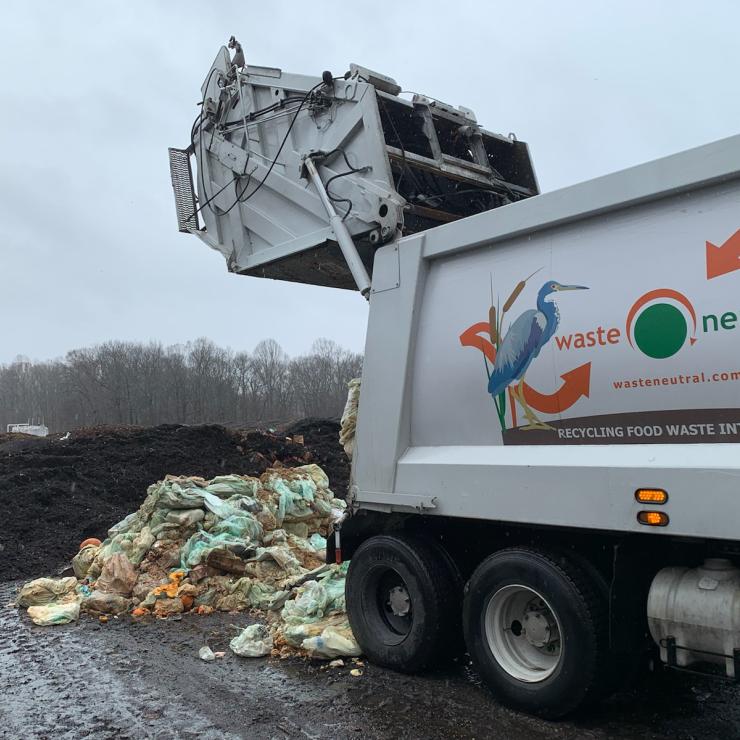
In this picture: The truck brings the waste to a compost facility. It is largely handled just like trash.
When the waste is made into compost, it sequesters the carbon - reducing our carbon footprint! The compost is also an important soil amendment, replenishing our depleted soils with carbon and nutrient rich material that better filters and slows stormwater runoff.
The Practicalities of Two Bins
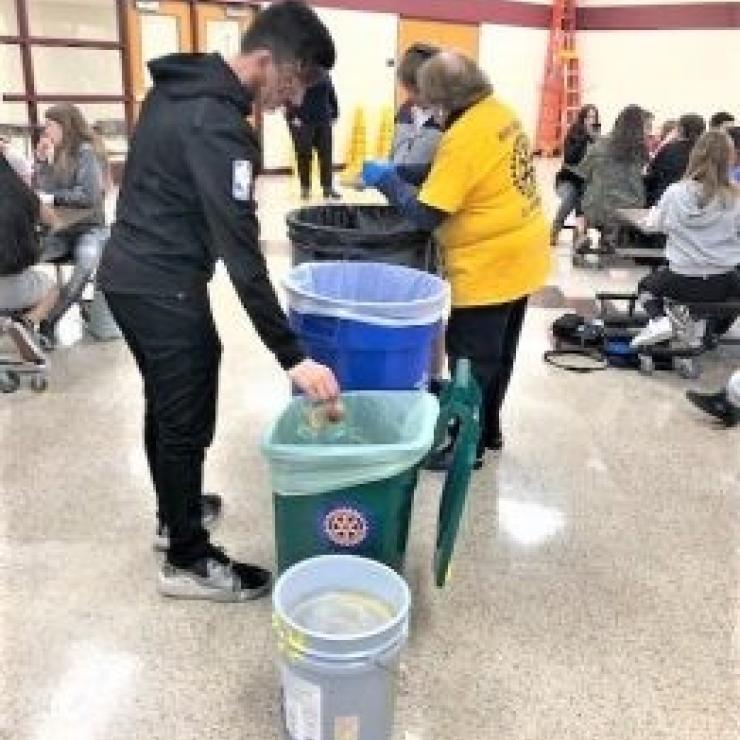
In this photo: students send their foodscraps into the green bin. Adding compost collection to this cafeteria simply required a second bin that gets dumped into its own dumpster.
Signage explaining what should be placed in which bin can be included on the bins or wall nearby to help people navigate the system. These signs are also recommended for existing recycling as well, to reduce contamination of the recycling stream!
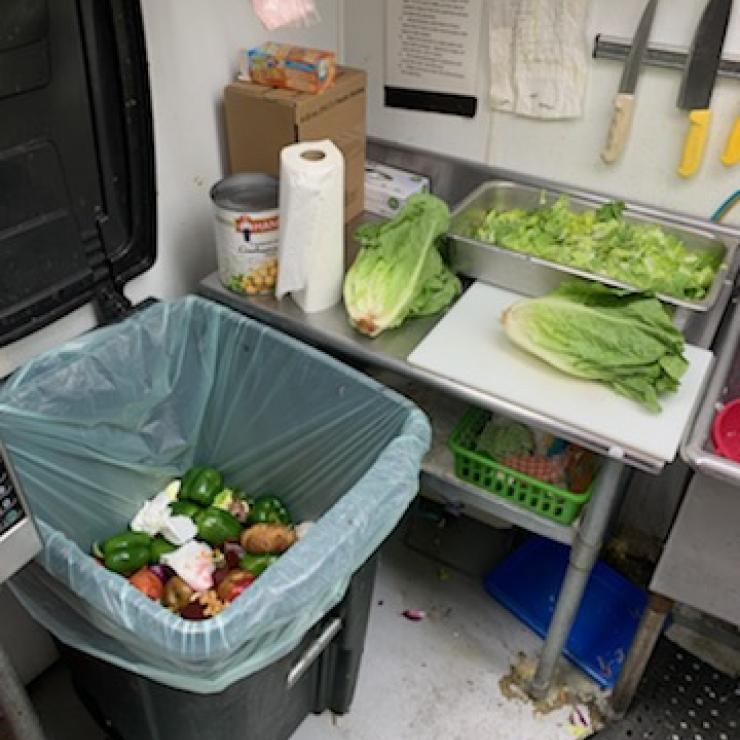
In this picture: In this kitchen, the bin next to the cutting station is a compost bin. Instead of throwing organic waste into mixed trash, organic waste is separated into the compost bin.
Since most waste in a kitchen is organic waste (food, paper towels, paper), compost bins can easily replace mixed trash. A small mixed trash bin can still be used.
Organic Diversion diverts waste from going unnecessarily into landfills or incinerators, but allows flexibility so businesses can find the right fit!
